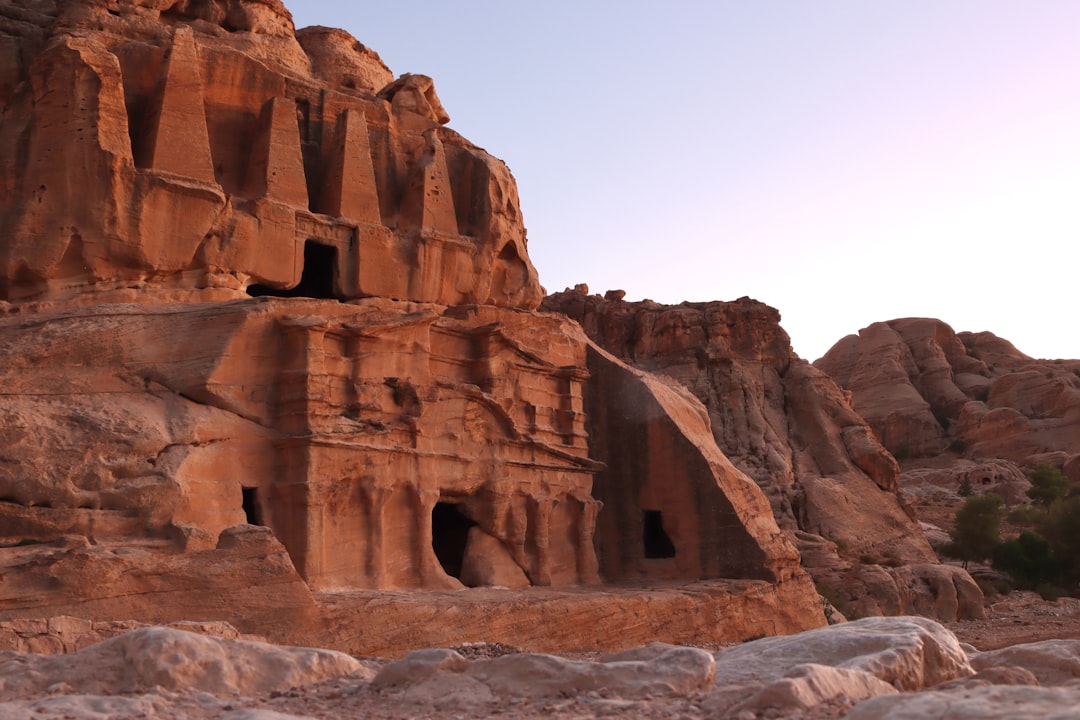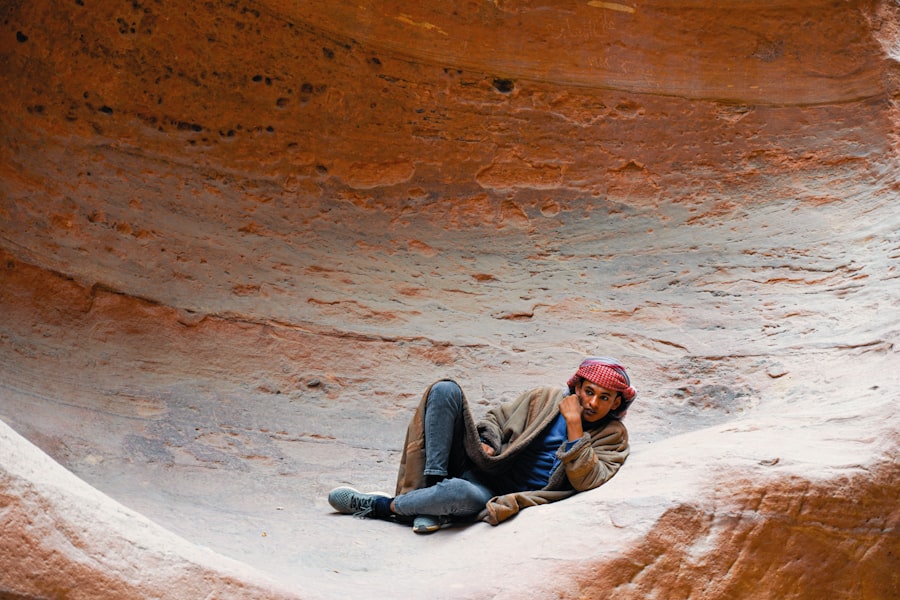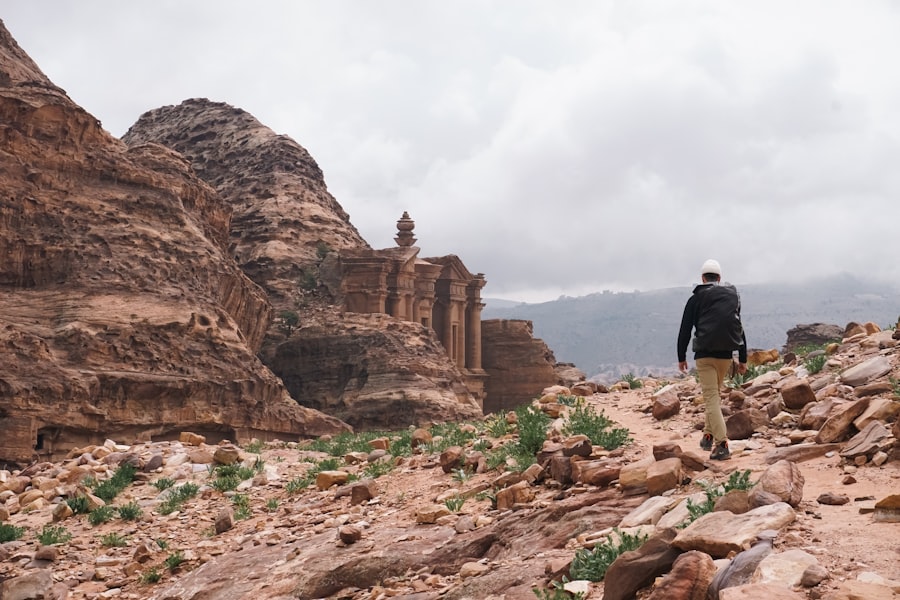
Jordan, a small yet remarkably diverse country located in the heart of the Middle East, is often regarded as a crossroads of history and culture. Bordered by Saudi Arabia to the south, Iraq to the northeast, Syria to the north, and Israel and Palestine to the west, Jordan serves as a bridge between various civilizations and cultures.
With a population of around 10 million, Jordan is home to a mix of ethnicities and religions, which contributes to its vibrant cultural scene. The capital city, Amman, is a bustling metropolis that blends ancient history with modernity. It is built on seven hills and features a unique combination of Roman ruins, Islamic architecture, and contemporary buildings.
Beyond Amman, Jordan boasts a wealth of archaeological sites, natural wonders, and picturesque towns that reflect its storied past and diverse geography. From the ancient city of Petra to the serene shores of the Dead Sea, Jordan offers an array of experiences that cater to history buffs, nature lovers, and culinary enthusiasts alike.
Key Takeaways
- Jordan is a country in the Middle East known for its rich history, diverse culture, and stunning landscapes.
- Visitors can explore ancient ruins such as Petra and Jerash, and experience the vibrant culture in cities like Amman.
- Jordan is home to natural wonders like the Dead Sea, Wadi Rum desert, and the Red Sea, offering unique outdoor experiences.
- Jordanian cuisine features dishes like mansaf, falafel, and mezze, providing a delicious taste of local flavors.
- Must-see cities and towns in Jordan include Amman, Petra, Aqaba, and Madaba, each offering its own unique charm and attractions.
Historical and Cultural Attractions
Jordan’s historical significance is underscored by its numerous archaeological sites that date back thousands of years. One of the most iconic is Petra, a UNESCO World Heritage Site and one of the New Seven Wonders of the World. This ancient Nabatean city, carved into rose-red cliffs, was once a thriving trade hub.
Visitors can explore its intricate facades, such as the Treasury and the Monastery, which showcase the remarkable engineering skills of the Nabateans. The Siq, a narrow gorge leading into Petra, adds to the dramatic entrance, with towering rock walls that create an awe-inspiring atmosphere. Another significant site is Jerash, known for its well-preserved Roman ruins.
Often referred to as the “Pompeii of the East,” Jerash features an impressive collection of temples, theaters, and colonnaded streets that transport visitors back to the Roman Empire’s zenith. The annual Jerash Festival of Culture and Arts celebrates this rich heritage through performances, art exhibitions, and traditional music, drawing both locals and tourists alike. Additionally, the Citadel in Amman offers a glimpse into the city’s layered history, with remnants from various civilizations including the Romans, Byzantines, and Umayyads.
Natural Wonders and Landscapes

Jordan’s natural landscapes are as diverse as its cultural heritage. The Wadi Rum desert, often referred to as the “Valley of the Moon,” is a breathtaking expanse of sandstone mountains and vast red dunes. This UNESCO World Heritage Site has been a backdrop for numerous films, including “Lawrence of Arabia” and “The Martian.” Adventurers can explore Wadi Rum through jeep tours or camel treks, immersing themselves in its surreal beauty while learning about the Bedouin culture that has thrived in this harsh environment for centuries.
The Dead Sea is another natural wonder that draws visitors from around the globe. Known for its extreme salinity—ten times saltier than most oceans—this unique body of water allows people to float effortlessly on its surface. The mineral-rich mud found along its shores is renowned for its therapeutic properties and is often used in spa treatments.
The surrounding landscape is equally striking; visitors can witness dramatic cliffs and arid mountains juxtaposed against the shimmering blue waters. The Dead Sea region also offers opportunities for hiking in nearby nature reserves like Wadi Mujib, where stunning canyons and waterfalls await exploration.
Jordanian Cuisine and Local Delicacies
| Dish | Description | Main Ingredients |
|---|---|---|
| Mansaf | A traditional Jordanian dish made of lamb cooked in a sauce of fermented dried yogurt and served with rice or bulgur | Lamb, yogurt, rice or bulgur |
| Knafeh | A sweet dessert made of shredded pastry dough, filled with cheese and soaked in sugar syrup | Pastry dough, cheese, sugar syrup |
| Falafel | Deep-fried balls made of ground chickpeas, fava beans, or both, often served in a pita bread with vegetables and tahini sauce | Chickpeas, fava beans, pita bread, vegetables, tahini sauce |
| Makloubeh | A one-pot dish with layers of rice, vegetables, and meat, usually served flipped upside down | Rice, vegetables, meat |
Jordanian cuisine is a delightful reflection of the country’s rich cultural heritage, influenced by various culinary traditions from neighboring regions. One of the most iconic dishes is mansaf, a traditional Bedouin meal made with lamb cooked in a tangy yogurt sauce and served over rice or bulgur. This dish is often accompanied by almonds and pine nuts and is typically enjoyed during special occasions or family gatherings.
Mansaf not only represents Jordanian hospitality but also serves as a symbol of national pride. Another popular dish is falafel, which consists of deep-fried balls made from ground chickpeas or fava beans mixed with herbs and spices. Often served in pita bread with tahini sauce and fresh vegetables, falafel has become a staple street food throughout Jordan.
Additionally, mezze platters featuring an array of appetizers such as hummus, baba ghanoush, tabbouleh, and stuffed grape leaves are commonly enjoyed during meals. These small dishes encourage sharing and socializing, embodying the communal spirit that characterizes Jordanian dining culture.
Must-See Cities and Towns
While Amman serves as the bustling capital of Jordan, other cities and towns offer unique experiences that reflect the country’s diverse character. Petra stands out not only for its archaeological significance but also for its charming village atmosphere. Visitors can explore local shops selling handicrafts and enjoy traditional meals at local restaurants after a day of exploring the ancient ruins.
Another must-see destination is Aqaba, Jordan’s only coastal city located on the Red Sea. Known for its vibrant coral reefs and crystal-clear waters, Aqaba is a haven for snorkeling and diving enthusiasts. The city’s laid-back atmosphere contrasts with Amman’s hustle and bustle, making it an ideal spot for relaxation.
Visitors can also indulge in fresh seafood at local restaurants while enjoying stunning views of the sea. Madaba is another town worth visiting, famous for its intricate mosaics dating back to Byzantine times. The Madaba Map—a 6th-century mosaic depicting the Holy Land—can be found in St.
George’s Church and serves as a testament to the town’s historical significance as a center for mosaic art. The nearby Mount Nebo offers panoramic views of the Jordan Valley and is believed to be the burial site of Moses.
Tips for Traveling in Jordan

Traveling in Jordan can be an enriching experience if approached with some practical tips in mind. First and foremost, understanding local customs and traditions is essential for respectful interactions with locals. Jordanians are known for their hospitality; greeting people with “Marhaba” (hello) or “Ahlan wa sahlan” (welcome) can go a long way in establishing rapport.
Dress modestly, especially when visiting religious sites; women should consider wearing long skirts or dresses while men should avoid shorts. Transportation options within Jordan are varied; while renting a car provides flexibility for exploring remote areas like Wadi Rum or Petra at your own pace, public transportation such as buses or shared taxis (service taxis) can be more economical for getting around cities. It’s advisable to plan your itinerary ahead of time to maximize your experience; many travelers opt for guided tours to ensure they don’t miss out on key attractions.
Carrying a reusable water bottle can help reduce plastic waste while ensuring you have access to water throughout your travels. Engaging with local cuisine is also highly recommended; trying street food or dining at local eateries will provide an authentic taste of Jordanian culture while supporting local businesses.
Jordan stands as a testament to resilience and diversity in a region often characterized by conflict. Its rich history, stunning landscapes, delectable cuisine, and warm hospitality make it an unforgettable destination for travelers seeking both adventure and cultural immersion.
If you’re interested in exploring more about unique destinations and their cultural heritage, you might find the article on “Burma Facts and Places to Visit” quite enlightening. Similar to the rich history and diverse landscapes of Jordan, Burma (Myanmar) offers a tapestry of sights, from ancient temples to bustling markets. Discover more about this fascinating country by visiting Burma Facts and Places to Visit. This article provides a deep dive into Burma’s history, culture, and must-see destinations, enriching your understanding of another remarkable part of the world.
FAQs
What are some interesting facts about Jordan?
– Jordan is home to the ancient city of Petra, which is a UNESCO World Heritage Site and one of the New Seven Wonders of the World.
– The Dead Sea, located in Jordan, is the lowest point on Earth and is known for its high salt content, which allows people to float effortlessly.
– Jordan is a relatively small country, covering an area of about 89,342 square kilometers.
– The official language of Jordan is Arabic, and the currency is the Jordanian Dinar.
What are some popular places to visit in Jordan?
– Petra: Known for its rock-cut architecture and water conduit system, Petra is a must-visit for history and architecture enthusiasts.
– Wadi Rum: This desert valley is famous for its stunning sandstone and granite rock formations, as well as its association with T.E. Lawrence, also known as Lawrence of Arabia.
– The Dead Sea: Visitors come to float in the salty waters and enjoy the therapeutic mud at the lowest point on Earth.
– Amman: The capital city of Jordan, Amman is a bustling metropolis with a rich history and vibrant culture.
What are some must-see sights in Jordan?
– The Treasury: This iconic rock-cut building in Petra is one of the most famous and photographed sights in Jordan.
– The Roman Theater: Located in Amman, this ancient theater is a well-preserved relic from the Roman period and offers stunning views of the city.
– Jerash: This ancient Roman city boasts well-preserved ruins, including a colonnaded street, temples, and theaters.
– Mount Nebo: According to tradition, this is the mountain from which Moses saw the Promised Land before he died. It offers panoramic views of the Jordan Valley, the Dead Sea, and the West Bank.



